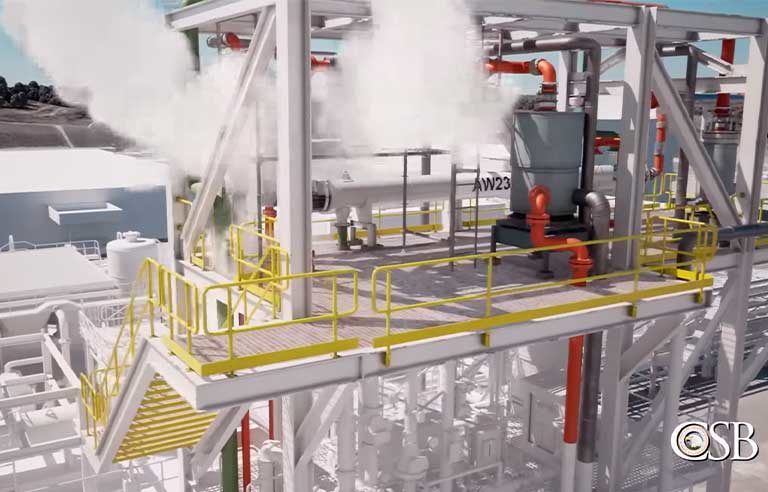
Photo: Chemical Safety Board
Washington — Chemical facility owners and operators should take into account how simultaneous operations can affect work and ensure they have written, easy-to-understand procedures for each task, the Chemical Safety Board says in a new video.
The video depicts the events that triggered a November 2020 chemical release at the Wacker Polysilicon North American facility in Charleston, TN. One worker died and two others were seriously injured while attempting to escape a cloud of toxic hydrogen chloride gas. Unable to see their surroundings, the workers fell 70 feet while climbing down the tower they were working on.
In its final report on the incident, the agency highlights safety lessons related to written procedures, control of hazardous energy, simultaneous operations (or SIMOPs) and means of egress.
“What should have been straightforward maintenance by two separate groups of workers turned deadly because of several serious safety issues,” CSB member Catherine J.K. Sandoval says in the video. “The CSB believes that our findings and recommendations will address the issues found at Wacker and prevent another needless tragedy.”
Among the report’s recommendations were those calling on OSHA to:
- Create a standard or modify existing standards to require employers to ensure the coordination of SIMOPs involving multiple work groups, including contractors.
- Develop a safety product – not limited to confined space or construction – that provides guidance on the coordination of SIMOPs involving multiple work groups.
McCraren Compliance offers a full range of safety and health training and consulting services. Plus we can help you incorporate well-being into your traditional systems in order to support the Total Worker Health of your workforce.
Call 888-758-4757, email info@mccrarencompliance.com or visit our website www.mccrarencompliance.com
Original article published by Safety+Health an NSC publication


